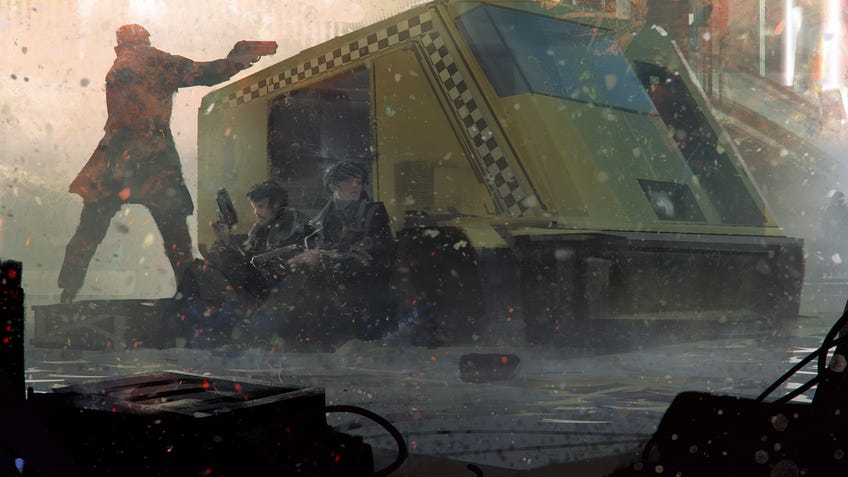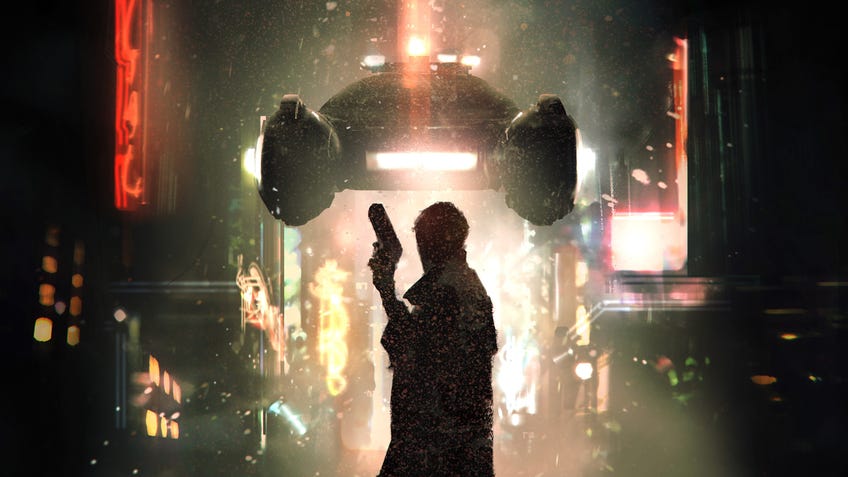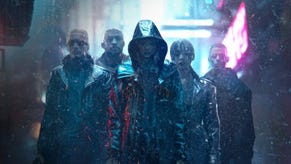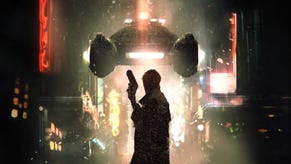Why the Blade Runner RPG will stand apart from the cyberpunk crowd
It might not last - but then again, what does?
An official tabletop roleplaying game based on sci-fi masterpiece Blade Runner was announced last week, simultaneously igniting both excitement and confusion. Even though there were plenty of people who were absolutely thrilled at the prospect of a TRPG set in the rain-soaked streets of an alternative 2030s LA, many still were questioning the need for yet another futuristic roleplaying game when titles such as Cyberpunk Red and Shadowrun exist.
Whilst the world of tabletop roleplaying games is certainly no stranger to speculative visions of grimy lonely cities and dystopian landscapes dominated by uncaring capitalistic gods, Blade Runner still has its own piece of the RPG pie to carve out. Blade Runner is worth adapting on its own merit because it has more to offer players than just another cyberpunk setting.

Regardless of the amazing performance by Rutger Hauer as Roy Batty, the beautiful score by Vangelis and the stunning outfits worn by Sean Young’s Rachael, the thing that most people cite as being the greatest aspect of the original Blade Runner is undoubtedly the world itself. The harsh clash of western architecture and Southeast Asian culture (whose inclusion in the cyberpunk genre has long been criticised for drawing on fears surrounding globalisation, xenophobia and anti-Asian sentiment), scathing commentary on ‘80s free-market greed and flying cars - these are all the things that people remember most about the film. But they’ve all since been included in a tabletop roleplaying game in some form or another - the Cyberpunk series has featured all of these elements through the years - and they’re not what I love most about Blade Runner’s world.
It’s a movie about a man doing a violent and dangerous job whilst the world around him simply carries on.
The thing that captivates me most when watching Blade Runner is the voyeuristic nature of Jordan Cronenweth and Brain Tufano’s cinematography, alongside Ridley Scott’s direction. Blade Runner is notorious for its slow pacing - I’ve heard many people criticise the film for having a plot where not much happens in a very long space of time. But these people are entirely missing the point of Blade Runner: it’s a movie about a man doing a violent and dangerous job whilst the world around him simply carries on.

(Minor spoilers for Blade Runner follow)
There’s a reason why the sequence where Deckard murders the replicant Zhora is so important. The terrible and bloody event happens in a crowded street but nobody else seems to notice or care. Apart from the obvious message that people like Zhora - workers who are only valued for what they can give the corporations that own them - matter very little in a world dominated by capitalism, this sequence does a lot to immerse viewers in the world of Blade Runner. As Deckard and Zhora conduct their chase through streets, shops and markets, the camera takes time from the intense action to linger upon the faces of passengers sitting in their cars and the scores of pedestrians blocking the road. Usually, these instances of sudden stops and shots of random people not remotely important to the plot would be frustrating, but it’s all entirely deliberate.
These slower moments are a unique part of Blade Runner’s identity and are a major reason as to why a roleplaying game based on Blade Runner would work so well.
As are the many other moments in Blade Runner where the camera isn’t following the action or whatever the main character is doing at the time. These include a scene in a market where Deckard’s dialogue is discernible, but you can see what all the different stalls are selling and hear the sounds of people yelling or animals screeching. Or when Deckard enters a seedy bar and the camera makes sure to let the viewer have a good look at all the strange people inside. These slower moments are a unique part of Blade Runner’s identity and are a major reason as to why a roleplaying game based on Blade Runner would work so well.
I’m not entirely sure how this cinematic technique would translate into a roleplaying game, but Blade Runner’s publisher Free League Publishing already has an excellent track record of adapting Ridley Scott’s films, with Richard Jansen-Parkes praising the Alien RPG for “beautifully” capturing the spirit of the original film in our review. I would want the eventual Blade Runner RPG sourcebook to encourage its game masters and players to find moments to take in their surroundings. I love nothing better than when GMs and players go the extra mile in describing what’s going on around them, as well as what they or their NPC might be doing at the time. Having a game system that allows for these moments would be important to conveying this sense of immersion - ideally without requiring its players or GM to constantly think about their stats or what kind of dice they want to roll.
I would want the Blade Runner RPG to provide plenty of opportunities for people to sit back and take it all in.
Rather than the Cyberpunk approach of supporting freedom to the detriment of creative storytelling, I would want the Blade Runner RPG to provide plenty of opportunities for people to sit back and take it all in. The RPG could even come with tools to help with this sense of intense immersion, whether that’s artwork that the GM could show their players or an accompanying soundtrack inspired by the original film’s music and soundscapes.

For me, the real joy of rewatching Blade Runner is being able to notice something entirely new during its quieter and slower scenes. The last time I watched the film, I made the thematic connection between the fact that Pris disguises herself as one of Sebastian’s toys when ambushing Deckard and that the character was created to entertain the Tyrell Corporations’ workers - almost as if Pris is having to, once again, turn herself into an object of pleasure in order to survive society’s attempts to subjugate her.
The Blade Runner RPG could also enable these moments of reflection - to be a roleplaying game that doesn’t just feature a cyberpunk setting and themes, but one that allows people to take things at a slower pace and really absorb the entire experience.






